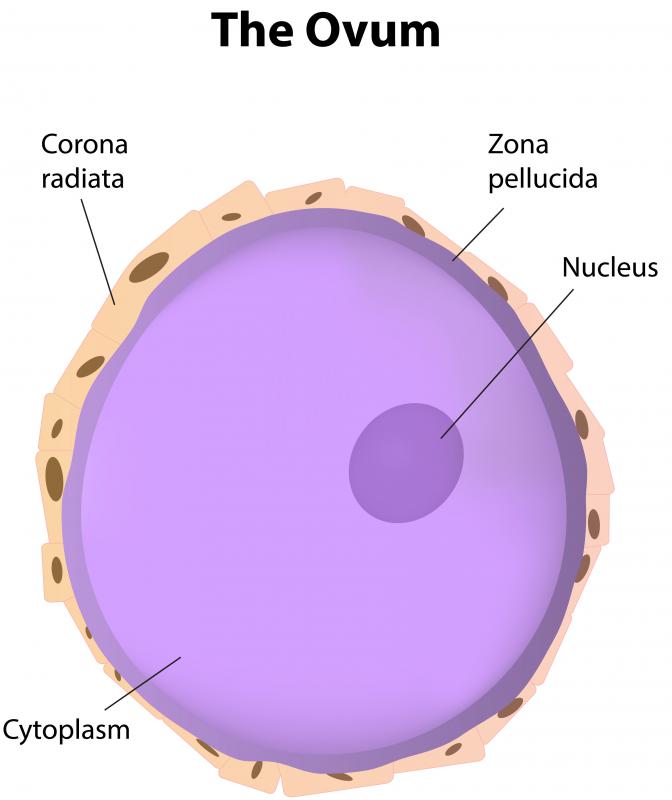At WiseGEEK, we're committed to delivering accurate, trustworthy information. Our expert-authored content is rigorously fact-checked and sourced from credible authorities. Discover how we uphold the highest standards in providing you with reliable knowledge.
What Is an Ablated Ovum?
An ablated ovum, also referred to as a blighted ovum, occurs when a fertilized egg develops only a placenta but no embryo. This is thought to occur primarily due to chromosomal problems with the fertilized egg. A pregnancy test is often positive, and other early symptoms of pregnancy may also be present, although hormone levels do not usually rise as expected and an ultrasound will show an empty sac. Cramping and bleeding may be present and signal a potential problem, prompting the patient to seek medical attention. Any questions or concerns about an ablated ovum or individualized treatment options should be discussed with a doctor or other medical professional.
When an ablated ovum is present, the woman normally misses a period and has a positive pregnancy test. Early symptoms of pregnancy, such as nausea, fatigue, and breast tenderness, are common as well. As the empty placenta stops growing, the pregnancy symptoms decrease or disappear altogether. This may cause emotional distress and cause the woman to seek medical advice.

A woman who had an ablated ovum may not find out for several weeks that the pregnancy is not viable. It is often detected at the first scheduled ultrasound. If cramping, bleeding, or spotting occurs, the condition may be diagnosed a little earlier. When an ultrasound is performed, it becomes obvious that the gestational sac is empty and there is no actual pregnancy.

Most cases of an ablated ovum will result in a miscarriage, as the body recognizes that the pregnancy cannot be sustained. The miscarriage occurs naturally, although medical assistance may sometimes become necessary. Prescription medications can be given to help the body expel the empty placenta.
Frequent blood tests may be performed after an ablated ovum has been diagnosed in order to make sure that the pregnancy hormones decrease in a normal fashion. If this does not occur, there is a relatively high chance that the body is unable to adequately expel all of the placental tissue. In this case, a minimally invasive medical procedure known as a D and C may be performed to remove the remaining tissue.

Most women who have had an ablated ovum are able to have successful pregnancies in the future. If fertility issues do develop, further diagnostic tests may be ordered to make sure there is no internal damage to the reproductive organs. In cases of repeated miscarriages, there may be an underlying medical condition that needs to be medically or surgically treated.
AS FEATURED ON:
AS FEATURED ON:













Discuss this Article
Post your comments